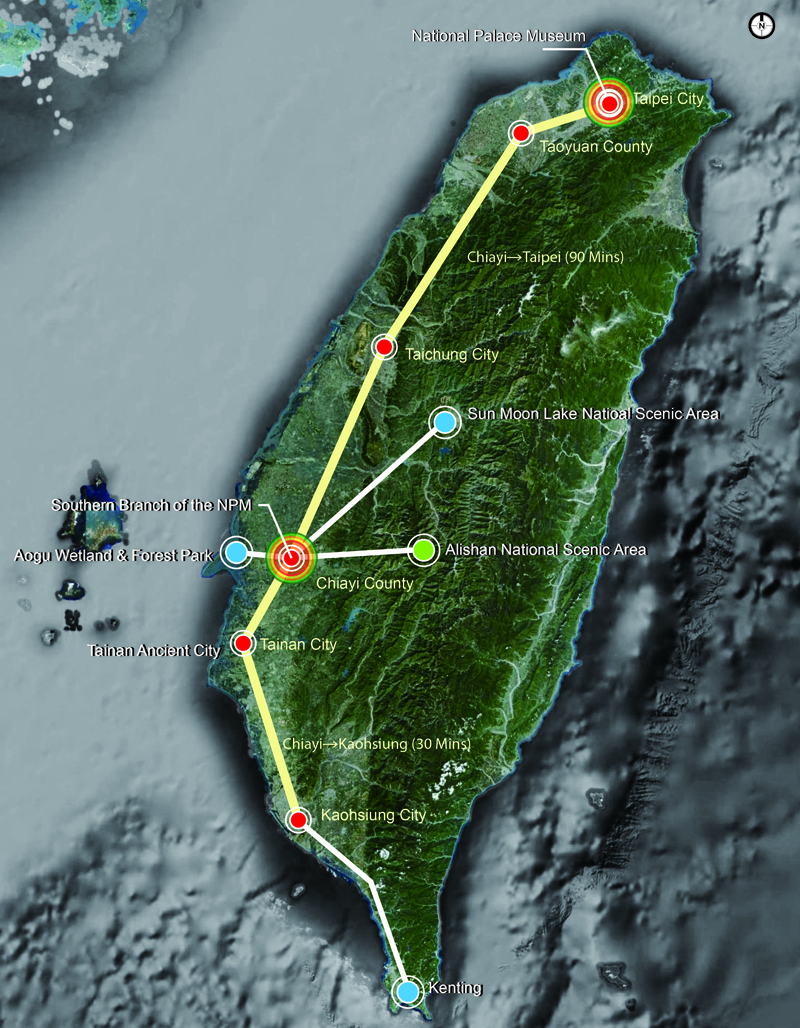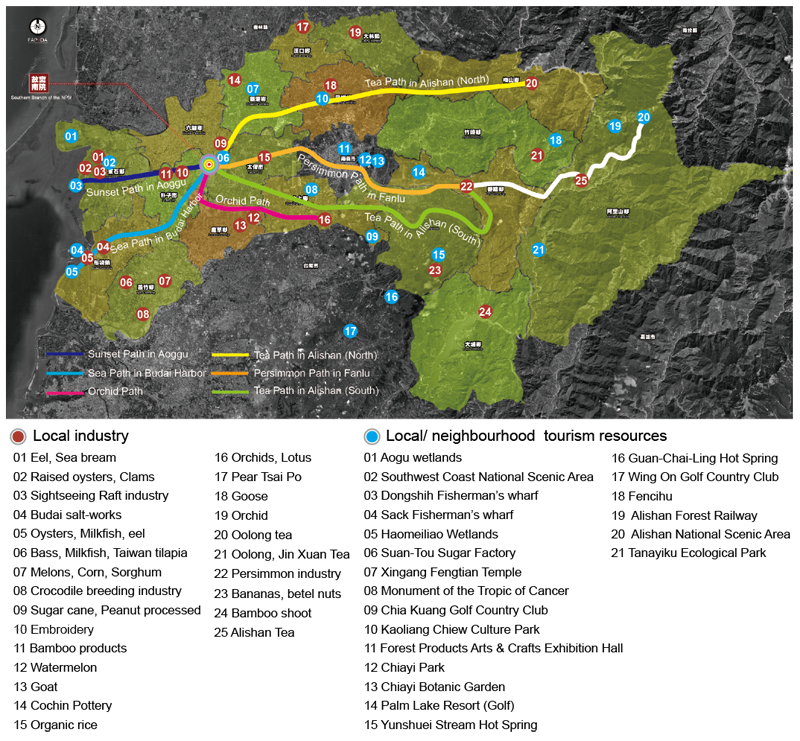Raise tourism quality in greater Alishan area, preserve indigenous culture, establish more secondary emergency shelters with sufficient life-sustaining materials and items provided to ensure visitor safety; mold Alishan, Meishan, Fanlu, and Jhuci as the roof of Taiwan. In 2013, Alishan has 2,060,000 visitors.
Aogu Wetlands is a great flora/fauna habitat thanks to the excellent location where Beigang River meets the Liujiao Drainage Channel as well as the network of deserted farmland, fish farms, plantations and Beef Woods that crisscrosses the wetlands. This wetland area features over 200 bird species and consequently draws attention from ornithologists worldwide. Among the internationally protected species inhabiting Aogu Wetlands are the Oriental White Stork, Black Stork, Black-faced Spoonbill, Chinese Egret, Sparrow-hawk, Chinese Sparrow Hawk, Grey-faced Buzzard, Osprey, Spotted Greenshank, Painted Snipe, Little Tern, and Brown Shrike. If the season is right, it will take just a short while to spot them either perching on tree branches or cheerfully greeting visitors by the pond-side.
A well-known temple in Chiayi County is Xingang Fengtian Temple. In 2010, it had visitors over 3,000,000 people. A “Sharing the Spirit” program was promoted overseas in places like Japan and the United States, and in 2007 representatives of the Xingang Temple of the Empress of Heaven even went on a tour to New York in the USA.

The local industries and culture in Chiayi County have strong characteristic respectively. For examples, Alishan tea in Alishan township, orchid in Shueishang and Dalin township, persimmon in Fanlu township, and eel in Dongshin township. These industries occupy an important role in Taiwanese agriculture, which can support the development of the cultural experience area in the Southern Branch site. Moreover, they can be linked with local tourism resources to offer visitors the varied travelling routes.
